Building of the Day: 862 Manhattan Avenue
Brooklyn, one building at a time. Name: St. Anthony of Padua Roman Catholic Church Address: 862 Manhattan Avenue Cross Streets: Milton and Noble Streets Neighborhood: Greenpoint Year Built: 1873-1875 Architectural Style: High Victorian Gothic Architect: Patrick Keely Other buildings by architect: St. Charles Borromeo, Brooklyn Heights; St. John the Baptist Church and college, Bedford Stuyvesant;…
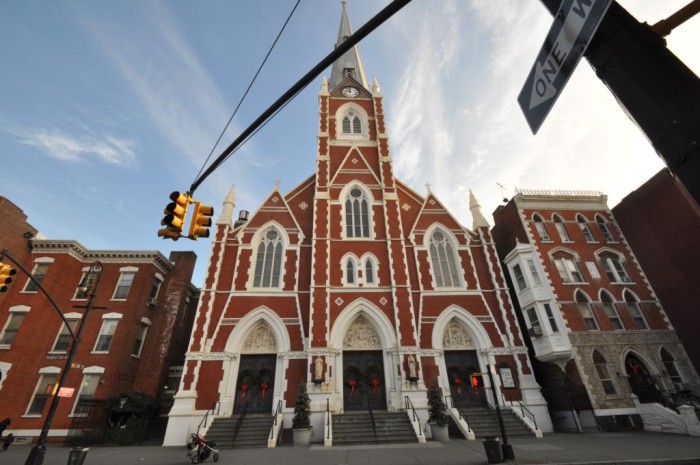

Brooklyn, one building at a time.
Name: St. Anthony of Padua Roman Catholic Church
Address: 862 Manhattan Avenue
Cross Streets: Milton and Noble Streets
Neighborhood: Greenpoint
Year Built: 1873-1875
Architectural Style: High Victorian Gothic
Architect: Patrick Keely
Other buildings by architect: St. Charles Borromeo, Brooklyn Heights; St. John the Baptist Church and college, Bedford Stuyvesant; Sacred Heart & St. Stephens, Carroll Gardens, plus many more in New York City and United States.
Landmarked: Yes, part of Greenpoint HD (1982)
The story: If you are a fan of religious architecture, as I am, there are few places in this country that are as packed with churches, synagogues and mosques as Brooklyn. They weren’t kidding way back in the late 1800s, when they started calling this burg “the city of churches.” It’s not just that there are a lot of them, the great thing is that so many of these churches are really good, architecturally speaking, and were designed by some of the best people in the business.
Some of the great architects of the 19th century specialized in religious buildings, while some were jacks of all trades, and could do anything. For those who primarily designed sacred spaces, most considered their talents to be a calling, as well as an occupation, and they put all of their faith and talent into their work. One of the greatest church architects of the 19th century was Patrick Keely.
Keely was born in Ireland in 1816, and came here in 1842. He worked as a carpenter, and was a very skillful craftsman and artist, often lending his skills to church building. In 1846, his friend, Rev. Sylvester Malone was called to start a new congregation in Williamsburg, and he asked Patrick Keely to design the church for him. That church was the Church of Sts. Peter and Paul, and was a fine success for anyone’s first church.
Keely had found his calling. He quickly became the Catholic Church’s go-to architect, especially for Irish Catholic parishes, of which there were a great many. He designed churches, rectories, schools, convents and parish houses not only here in the NY area, but all up and down the East Coast. Boston has quite a few Keely churches. Albany has one still standing, as well. On rare occasions, Keely designed for the Episcopalians, and his soon to be demolished Church of Redeemer on Fourth Avenue in Boreum Hill will be a great loss.
Here at St. Anthony of Padua, Keely designed what some consider to be his best Brooklyn church. Personally, I’m more impressed with St. John the Baptist in Bed Stuy. But this one is truly a beauty, and a great church, in part because of where it’s situated on the street. The church is right at the junction of Milton Street and Manhattan Avenue. When one is travelling up Milton, it looks as if the entire street was placed there solely to lead up to the church, with its tall 240 foot spire. It’s a great urban vista, and quite impressive, whether one is a believer or not. Good architecture is good architecture.
The parish was founded in 1853. Prior to that, most of Greenpoint’s Catholics went to Keely’s first church, Saints Peter and Paul, in Williamsburg. Bishop Laughlin, Brooklyn’s first and most influential bishop, purchased the land for the rectory, school and church is various stages over the next fifteen years. This church had its cornerstone laid in 1873, and was completed and dedicated in 1875.
Many of Keely’s churches are built with very high basements, as the lower level was used for services as soon as it was habitable, while the rest of the building went up above it. Keely also liked polychrome and a vertical angularity, a hallmark of the High Victorian style popular in the 1870s, especially in churches, schools and public buildings. This church is resplendent in all of that, with the towering spire, steeply angled bays and gables, and polychrome, or multi-colored façade. The red brick body of the church is wonderfully highlighted by Bellville and Nova Scotia freestone, both high quality white sandstone stone trims, all sitting on a rock faced base.
Keely highlighted the red-white polychrome theme with clock face towers, diamond shaped Minton tile trim and carved panels of birds and foliage above the doors. This church is true to Gothic principals, it is even buttressed, but Gothic as seen through the lens of a Victorian. It is quite lovely, and worthy of all the praise it’s been given at the time, and since. To complement the church, Keely also designed a Gothic style rectory next door. Later in the church’s history, that building became the convent, as a new rectory was built on the block behind the church.
Keely is credited with having designed every cathedral in New York State, with the exception of St. Patrick’s in Manhattan. A cathedral is a church which contains the seat of a bishop. We know he designed over 600 churches in total. Unfortunately, many of them are gone. To have some of his best right here is great, and this one should not be missed. GMAP
(Photograph:Christopher Bride for PropertyShark)
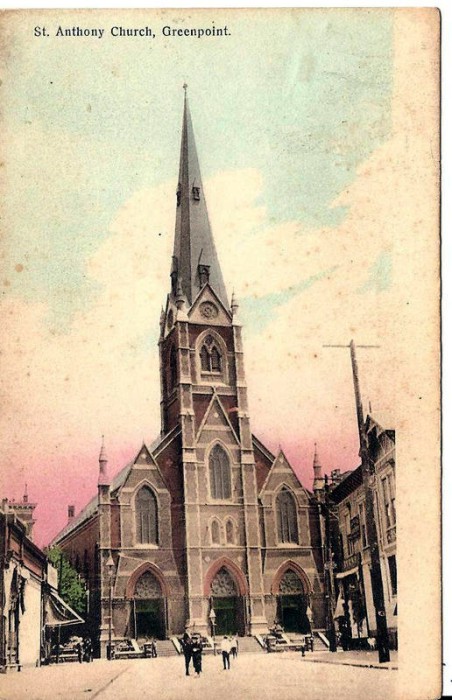
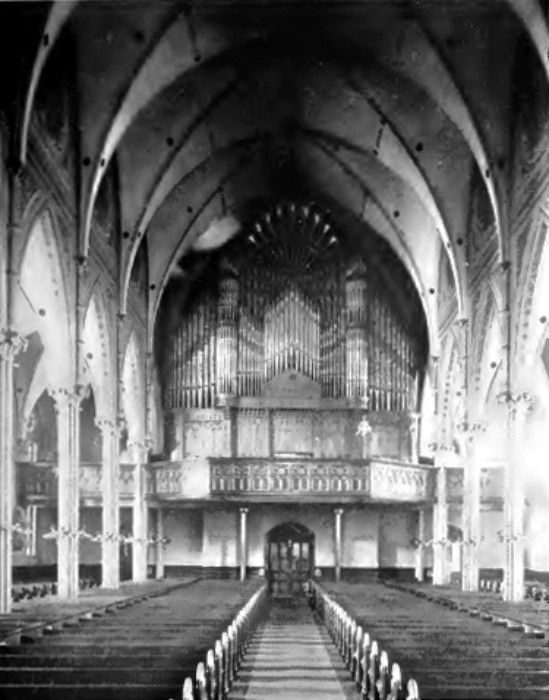
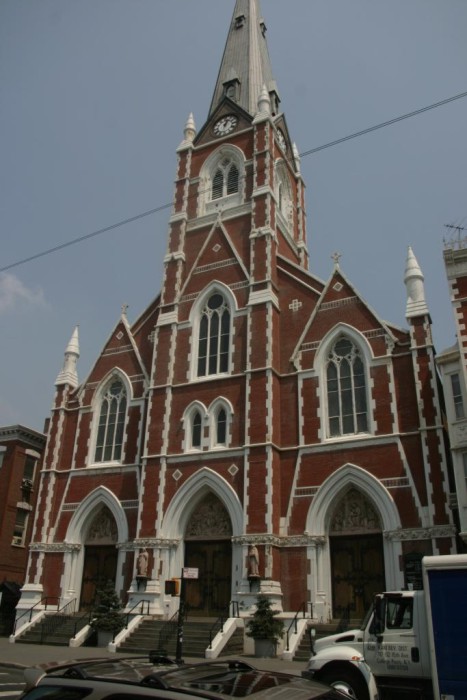
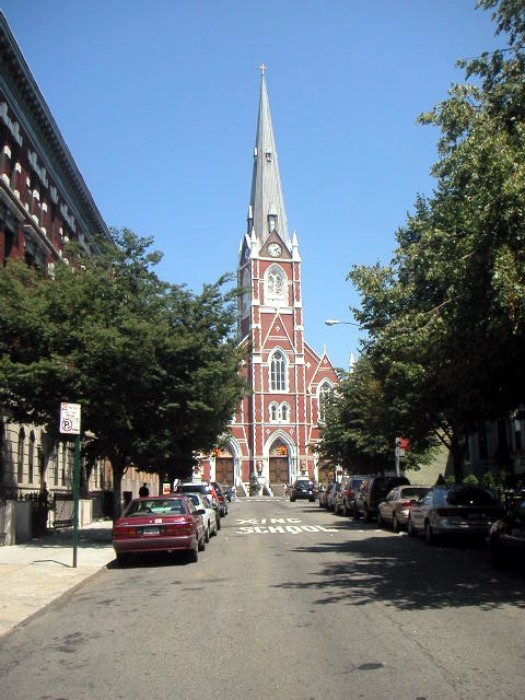




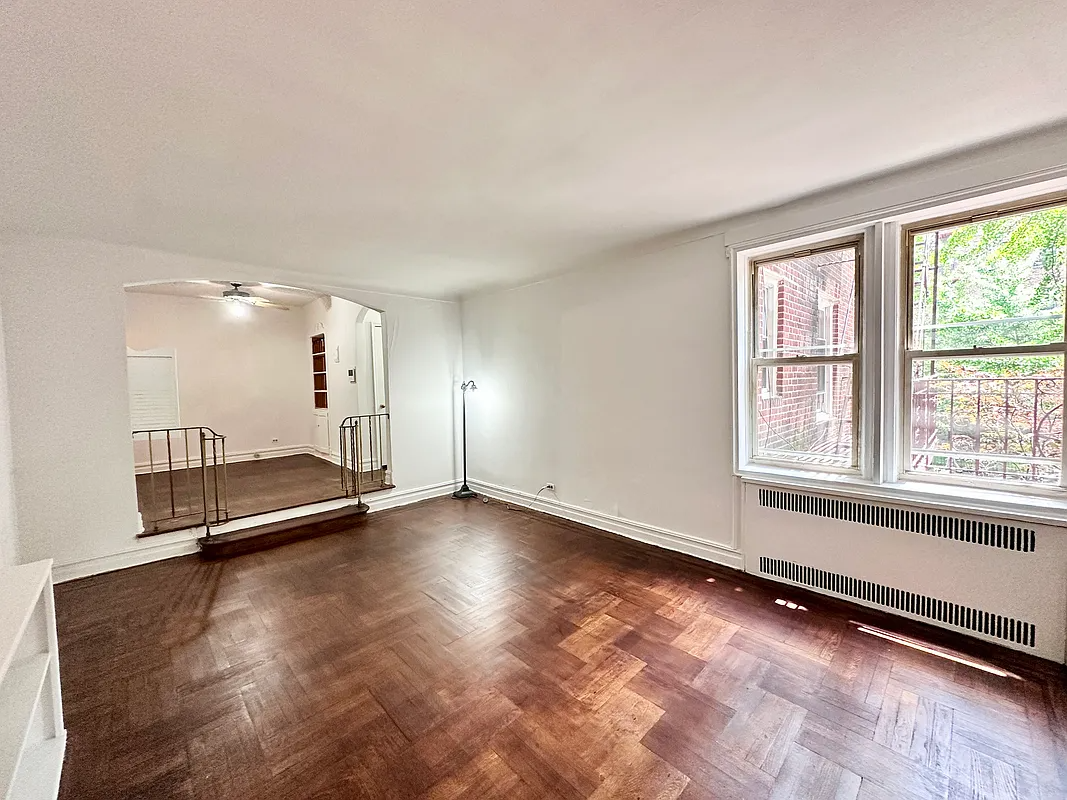
What's Your Take? Leave a Comment